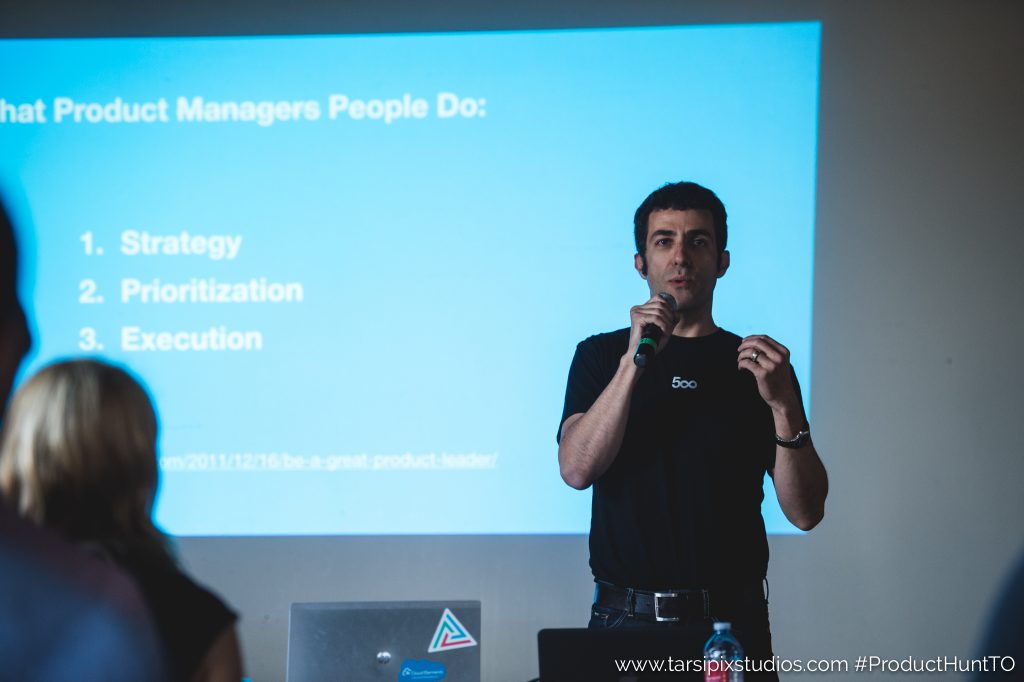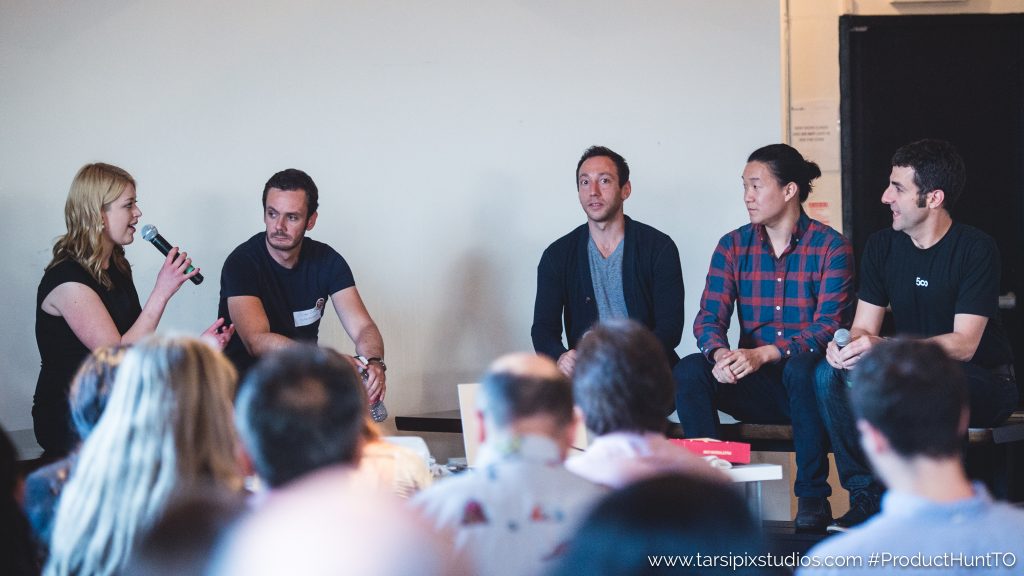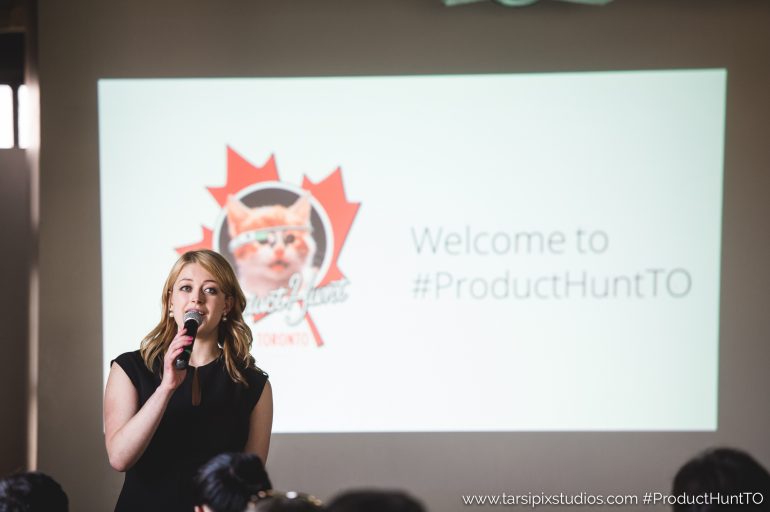Watching almost 300 people gathered on the sixth floor of the Burroughes building, it’s hard to believe that Product Hunt Toronto started as a tweet. Almost a year ago, organizer Daryna Kulya attended ProductCamp Toronto with the Product Hunt Toronto idea and found it upvoted by the community.
While Ryan Hoover and Erik Torenberg started the original Product Hunt in San Francisco, Kulya said Product Hunt Toronto is the first “community organized” event from Product Hunt put together by volunteers, rather than an official Product Hunt team.
Every two months, Product Hunt Toronto brings together people looking for the latest in Toronto-made digital products with demos, drinks, and a panel discussion with industry leaders about what they’ve learned about product building and management.
“Everything you see is pretty new, but it’s made to the point that these people went through several iterations to get it,” Kulya said, adding that it’s tough to choose who gets to demo among the many awesome startups that apply. “There’s only a few that can actually share something they learned about building their products.”
Last night’s event examined the intersection of art and technology in the tech space – a theme well-chosen by Kulya with NXNE coming up in a few weeks. Product Hunt kicked off with a keynote speech from Joseph Bou-Younes, VP of Product at 500px, who spoke about metrics-driven product management and the importance of having product managers as you scale. “Product managers are responsible for three things: strategy, prioritization and execution,” Bou-Younes said. “They have to prioritize based on time and effort and having an impact quickly, while execution is leading the team and getting shit done.”

Strategy is a sticky wicket, and Bou-Younes said that it’s important to know “what game are you playing, and how do you score.” Before even choosing the metrics to set up your product strategy, he explained, you have to set up your product strategy, using 500px as an example: reward visual creativity for everyone in a world where people are primarily mobile. With its story down, the company decided to use app installs and photo uploads as metrics. “It’s easier to build these after you have a product-market fit, but it is very important to do this before and you’ll write it down, do some work and constantly revise it,” Bou-Younes said. “That’s okay, the important thing is that the story has to be there and has to evolve over time with the work you’re doing.”
After the keynote, three startups that intersect tech and art did demos before the audience. Jesse Dallal, co-founder of Rithm, described his instant messaging service that allows users to send music to their friends and save it on their playlists. Wondereur, an online and mobile platform that gives art buyers access to the artist’s creative process, boasts a collection of 469 pieces of art across 12 countries, chosen by 27 influential curators (The Globe and Mail recently partnered with Wondereur to create a collection of the Canadian art favourites of influential members of the community – including a feature with author Joseph Boyden). Palette, a modular interface and the only hardware feature of the night, is a series of snap-together sliders, buttons and dials that can be personalized for any use, including photo editing and making music. Calvin Chu, founder of Palette, announced that after a year of prototyping and a Kickstarter that raised $158,000, they were finally shipping this week.

A panel with the participants followed, where they discussed the challenges associated with the creation of their products. “Art is something so personal and they’re so afraid of judgment of others, that they don’t share,” Olivier Berger, co-founder of Wondereur, said. “By the time we finally realized that, we had lost some funds.”
Bou-Younes described a similar challenge stemming from the fear of sharing. “When you go to our site, you see a lot of photography that is by high-end hobbyists,” he said. “That actually creates quite the intimidation factor, so even before I joined the site, the feedback I would get is that people love the site but they don’t feel that their pictures are worthy enough. It’s a struggle to remain accessible and have a great quality of experience.”
They also talked about how they got to the point where they knew what sort of metrics they could be measuring to understand their company’s growth. “Start with your strategy and ask yourself, what is our product doing better than other, similar products. Focus on those things and track it, measure it for success,” Dallal said. “For us it’s all about the social experience and people sharing music with their friends. We try to track that and optimize it as much as possible.”
To end the event, the panelists described what makes their products mean something to them. Berger described how much art has meant so much to him since he started collecting when he was 18.
“There’s no use for my pieces,” Berger said. “They’re not doing anything for me except that they can increase in potential value over time, but for me they’re precious. I have an emotional connection because I know the story behind them.”
Images courtesy Brian Simon of Tarsipix Studios.

